
David Easton – 45 Years of Rammed Earth
by Mark English, AIA | Editorials, Interviews
Building materials and resilience are intrinsically linked. Rammed earth is perhaps the longest-enduring building material.
Building materials and resilience are intrinsically linked. Rammed earth is perhaps the longest-enduring building material, employed by the Babylonians and the ancient Chinese to build fortresses, temples, and even parts of the Great Wall of China. Its legacy continues through to the present day, where modern technology has transformed it into a truly unique and beautiful material.
In a basic sense, rammed earth is a kind of human-made version of sedimentary rock. Earth is compacted layer by layer in a formwork, which is then removed, revealing a beautifully stratified surface. David Easton, President of Rammed Earth Works, has been building with rammed earth for the past four decades. I sat down with him at his workshop in Napa, under a smoke-filled November sky, to talk with him about his experience bringing this ancient material into the modern era.
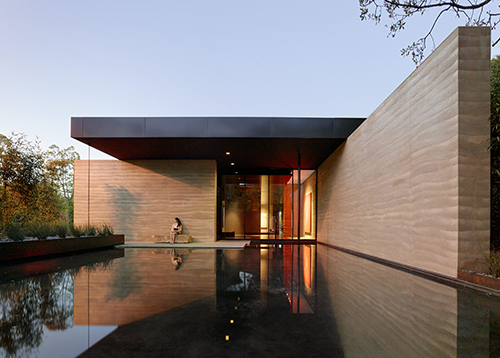
David Easton Interview – November 16, 2018
Oliver: Where did you first hear about rammed earth?
David: It was right after I got out of college. [In 1974], I found a book on the rack of a natural food store in Jackson, CA that was ‘How to Build Your House of Earth’ by an Australian named Rex Middleton. I was looking for a way to build my own house with a minimum investment in the cost of building materials. I evaluated rammed earth and thought that although there wasn’t much written about it, it seemed to be the most efficient way.
O: What inspires you most about this material? What has kept you interested in it all these years?
D: I believe that I was inspired because there was so little known about it – it provided me with a challenge to develop means and methods that didn’t exist. It was a situation of finding an enormous challenge that you could set a major goal to overcome. It was how difficult it was that made me want to perfect it.
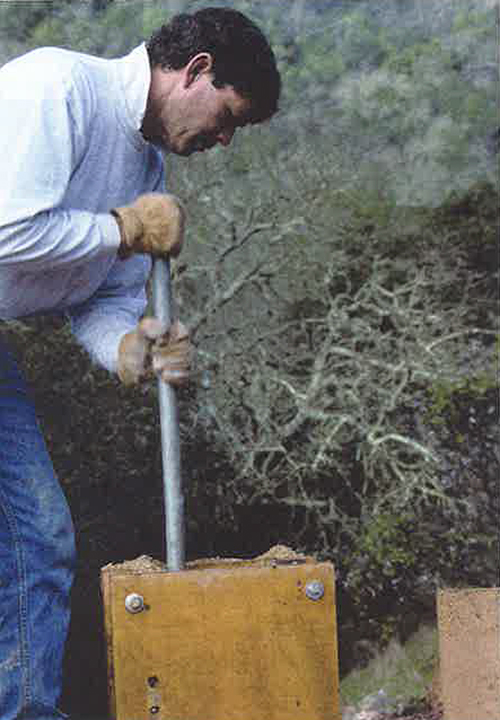
Photo Credit: Cynthia Wright
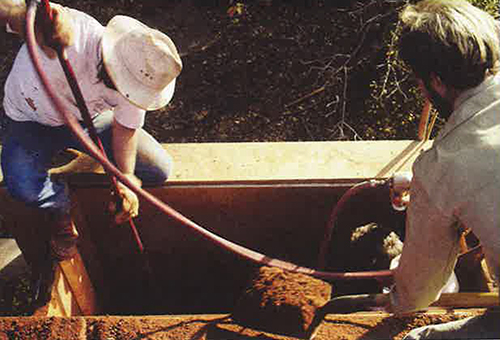
Photo Credit: Cynthia Wright
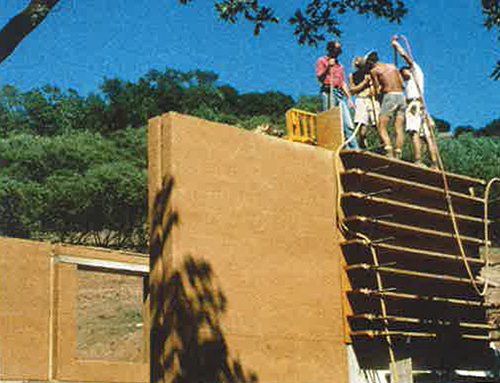
Photo Credit: Cynthia Wright
O: What distinguishes Rammed Earth Works’ products from their competitors?
D: There are people building rammed earth all over the country and all over the world. I believe that our company has been able to refine the process to bring it more in line with contemporary building standards and project management standards.
What sets us apart is our professionalism. A lot of the other rammed earth builders as I understand it are mavericks. We’ve tried to be more normal, fitting into the whole stream of construction that’s involved on the site and all of the tradesmen. So we work with all of the tradesmen to use systems that people recognize – how doors and windows are mounted and how electrical and plumbing is installed and we’ve gotten faster so our timeline doesn’t require that a project be delayed months and months while the rammed earth walls were being built.
O: When you started, you were acting as a full general contractor, responsible for every part of the building process. When did you make the switch to specializing on just rammed earth and what inspired that decision?
D: Well, I switched about seven years into it because I wanted to concentrate on improving the rammed earth technology. I needed to build more rammed earth – I needed to do 12 projects a year rather than one. And if we were general contractors who happened to build rammed earth walls, we didn’t have as many chances to build rammed earth walls. It wasn’t a business decision as much as an exposure decision.
O: Is there a ‘secret ingredient’ to making good rammed earth or is it the product of many factors?
D: It’s the product of many little factors – there is no ‘secret’ to making rammed earth at all. To make good rammed earth there is just experience. You need to have the proper mix design and the people that are doing the work need to be good at what they’re doing – as in any trade.
What sets us apart at Rammed Earth Works is the fact that we’re always pushing the envelope. We’re always trying to get better – we’ve never been satisfied with doing something exactly the same way as our last project. It’s not always a good way to run a profitable business, but no one can accuse me of having run a profitable business.
O: It sounds like profit is not your primary driver.
D: No, not at all. My driver was to develop a construction system that was more ecologically responsible.
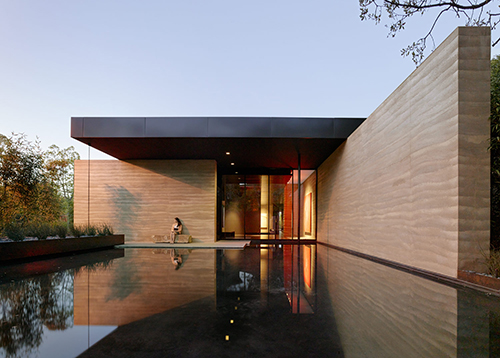
Photo Credit: Matthew Millman
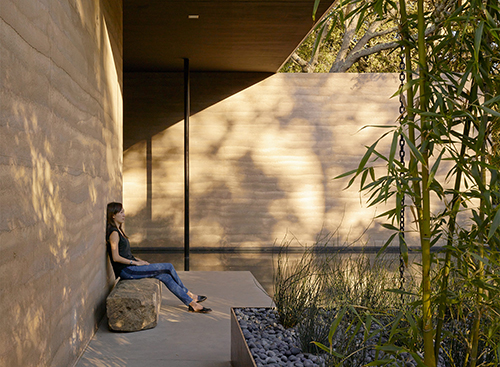
Photo Credit: Matthew Millman
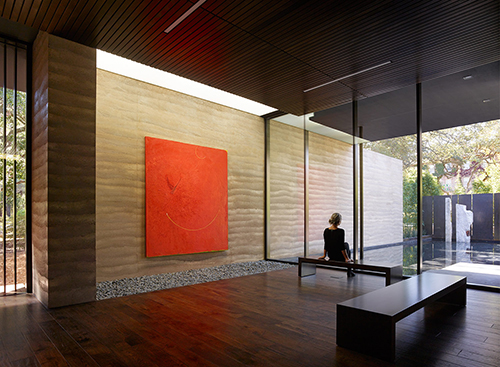
Photo Credit: Matthew Millman

O: You ‘wrote the book’ on rammed earth-
D: – I wrote a book. I’m embarrassed by the last book that I wrote, it had a lot of hubris in it. I thought I knew everything back there in 1982 and I was so wrong. It is one of my absolute goals to try to synthesize the work that we’ve done in the last 20 years and to write the book on rammed earth. I don’t want it to come across as some vanity piece. I want it to be ‘here’s everything we’ve learned after all these years and it’s an open source – try it.’ There is so much subtle nuance to what we’ve learned all of these years that is not written down. I’d like to do it.
O: What were the greatest obstacles you faced in making rammed earth an accepted part of the California building code?
D: Repetition. Just plain doing it. 10 times, 20 times, 100 times, 200 times, it’s the fact that we can point to projects that are featured in magazines and on tours. So you’re dealing with a new building official who says ‘I don’t like it,’ you can say ‘well, wait a minute. I have 300 building permits in 42 California counties. How can we work this out?’ And it just gets easier because it’s been done so many times before. That doesn’t mean that you won’t come to a jurisdiction that you haven’t worked in before and they won’t throw all of these roadblocks in front of you.
There are now structural engineers throughout all of California that have designed big buildings with rammed earth and they are supportive of the system. So it has something to do with volume. Now, people still misunderstand what rammed earth is. They think it’s muddy.
O: There are a lot of people who think of rammed earth as just one more ‘hippy building material,’ the same as cob or strawbale. What do you say to those people?
What distinguishes rammed earth from the other “natural building” techniques?
D: Oh, god. Well, I think it’s most effective when you just say, ‘rammed earth is much closer to cast in place concrete.’ The clay content is really low. In fact, mostly we use crushed stone now instead of earth. We like to still call it earth because that’s what it’s been called and that’s the placement technique.
Unlike adobe and straw bale and cob, which are hard to hard to quantify and classify, our material is very carefully monitored with special inspectors, it’s regulated, and we have compression testing. This stuff is 1500, 2000, 3000 psi, so you can see that it’s very close to concrete. But that doesn’t mean that this question doesn’t come up every single time when you’re dealing with somebody new.
O: What do you say to someone who needs to be persuaded in the opposite direction? How do you justify the sustainability aspect of it given how far removed this material is from traditional rammed earth?
D: Honestly, I say you’re right, we do use a lot of Portland cement and I feel really badly about it. We know from historical rammed earth buildings that they don’t need to be as strong as the building department and the engineers are asking us to make it. We can look at these 400- and 800-year-old buildings without cement, without reinforcing steel, that are still standing, but the modern codes require that we meet these certain structural minimums.
As much as I regret it, to achieve these minimums I still rely on Portland cement. My hope is that we can develop alternative binders, that we can get engineers and building officials to recognize safety at lower compressive values, but where we are right now is that if I want to continue to build rammed earth walls, I have to accept the reality that I need to use Portland cement.
O: What about if you were based in Texas or Arizona?
D: If I was in the desert, I could use way less cement. And our whole laboratory testing program that’s always underway is to find ways to attain the required strength at lower cement contents.
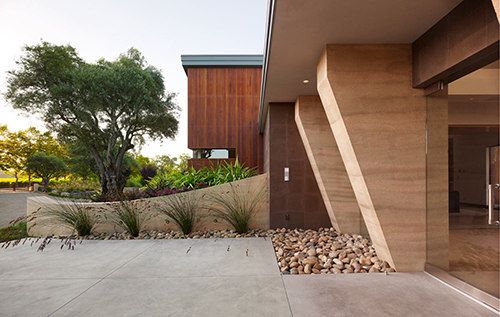
Photo Credit: Adrián Gregorutti
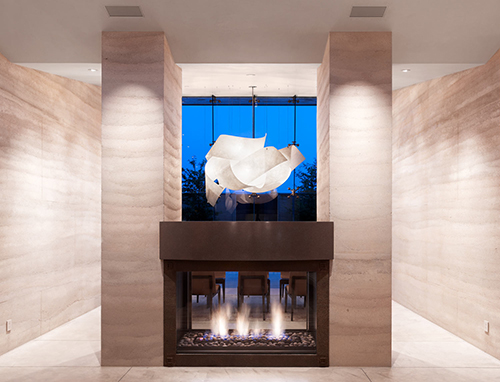
Photo Credit: Adrián Gregorutti
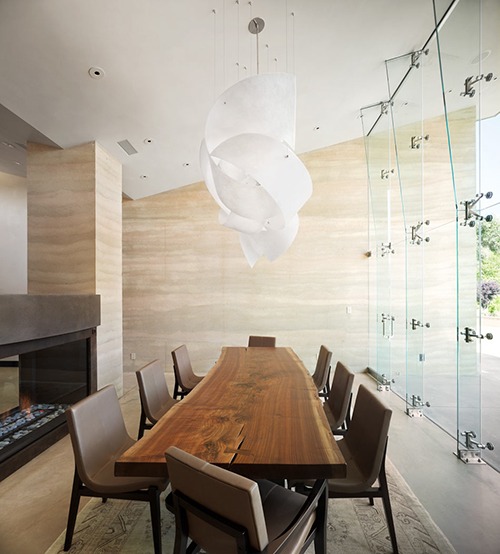
Photo Credit: Adrián Gregorutti
O: Is rammed earth just a luxury material? Do you see it becoming affordable for everyone?
D: It depends on where we’re building. In California, our market is the luxury home buyer or the real estate developer or the property owner who wants a beautiful piece of art in their structure.
Labor rates are through the roof. Engineering fees, legal fees, everything combines to drive the cost of a rammed earth wall away from the average consumer. Mostly labor rates. When we go some part of the world where labor rates are low, then rammed earth is a very valid alternative to other methods of construction.
With a labor-intensive process like this, it takes 8 guys 2 to 3 months to build a set of walls, that’s $400,000 there just paying payroll. And when they have to travel and you put them in a motel, that doubles the cost right there. I don’t see a way around it. So we’re stuck in this conflicting situation of just servicing the ultra rich with a product that was supposed to be for the poor.
O: Watershed Block was intended as that midpoint. What happened?
D: I don’t know why I couldn’t get the block to sell. It seemed like such a good idea. We did a few projects and I don’t get any calls for it any more. We stopped marketing it because I couldn’t afford to market it when we weren’t selling it and we can’t produce it for the amount of money that it would take to pay the rent on the building. So it just kinda fell by the wayside.
O: Is it just that it’s not far enough away from CMU for people to justify the cost increase?
D: Yeah, they won’t pay any extra for it as it turns out. They won’t pay 10% extra if they can get it from Basalite. People won’t invest in their green conscience. They’d love it to be green as long as it doesn’t cost them any more money.
Because of the slow rate at which the blocks are made and the cost of doing business, of renting a facility and paying skilled labor, we couldn’t produce the blocks for enough money to maintain profitability. Which is why we pivoted to the idea of a transportable block plant.
Instead of selling block that we make here at the factory, now we are trying to make machines that go somewhere where there is a pile of aggregate and someone who needs blocks. A big developer who’s doing a 100 acre site and he wants to put a block wall around it, or a fire-damaged area where people need to rebuild their houses, or an island where people need to rebuild after a hurricane, somewhere where people need jobs and need blocks and there is an advantage to making them onsite rather than importing them.
O: For centralized production, do you imagine automation or drastically decreasing the cycle time of the machine would make a big enough difference to reach that price parity point with CMU?
D: No. That was a mistake that I made at the outset. If you are going to use compression – ultra high compression – to squeeze the block hard enough that you can get it strong without cement, that takes time. The compression cycle takes 20 seconds. So it’s a question of ‘do I have that 20 seconds or would I just be better off buying 10% cement?’ It’s cheaper to buy the cement than the time to make a squeezed block.
Now, what we’ve been working on was an alternative to cement. We found that alternative but it’s more expensive than Portland cement. So we’re stuck for the time being until this binder is less expensive or until these other aspects of the block plant on the construction site pays for itself.
If I go up to where these fires were and people don’t have a lot of money and they’ve lost their jobs and I say ‘look, someone (not us) is gonna bring a block plant up here and ten of you are gonna run a block plant.’ There’s ten jobs, everyone gets 12 dollars an hour. And then we need 30 masons, so there’s going to be a masons training program. So now for everyone that’s up in this community where you all lost your livelihoods, there are now 40 jobs to build houses with block walls that won’t burn next time. So I’m hoping that will work. I don’t seem to have the ability to craft that whole thing into the compelling argument that would get someone to invest in it but it sounds really logical.
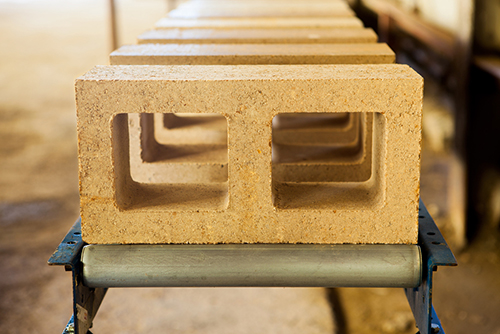
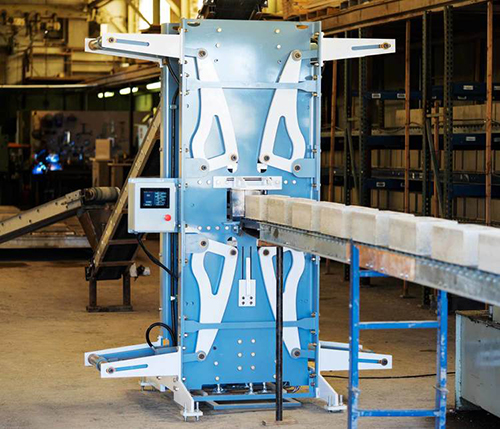
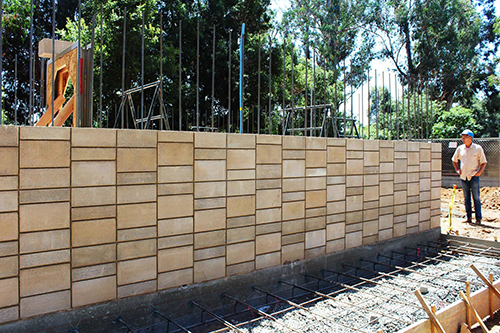
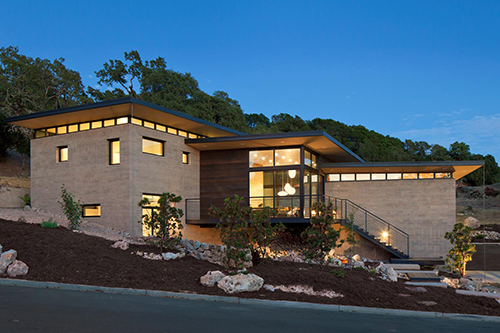
Photo Credit: Mark Luthringer
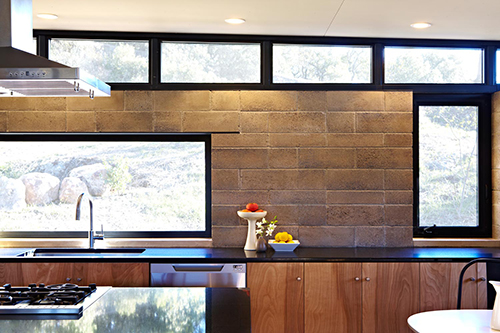
Photo Credit: Jacob Snavely

Photo Credit: Jacob Snavely
D: Someday people will realize that the ground beneath your feet or in that nearby hole in the ground can make building products. And what we have done at Rammed Earth Works for all of these years is build credibility for this beautiful material. I believe, having written those books and done this high-visibility work, that we have built credibility for rammed earth – for earth as a modern building material. And I’m very proud of that. Didn’t reach all of my goals, which was that it was going to be cheap. But it’s certainly beautiful and strong.
I wanted to say earlier that the reason we’ve reached this level of respect and credibility is that maybe 10 or 15 years ago, [my son] Khyber and I made an agreement. A pact, if you will, to slow down and improve the quality, because I approached this from ‘faster is better’ even though faster got us into a lot of callbacks and troubles with out of square windows and doors and out of plumb walls and inconsistent quality. So he and I agreed to allow more time for every step of the process. So there were fewer risks and fewer callbacks. The cost went up, but the quality doubled. Well, actually the quality quadrupled and the cost doubled, so we were actually in a better place. So it was really after that change in our approach that we elevated our game and got to a different clientele.

Photo Credit: Michael David Rose
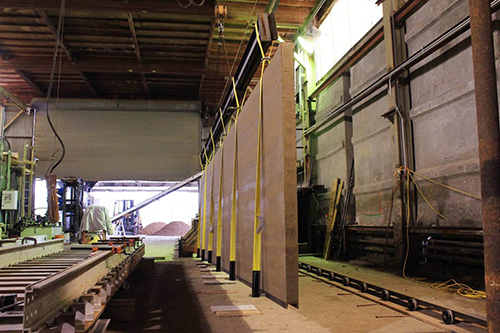
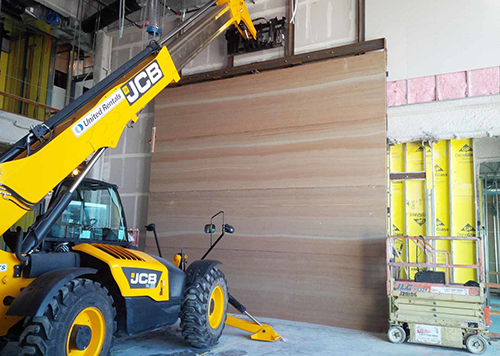
The 3″ thick structural veneer panels are mounted on steel frames, allowing for installation of rammed earth in places where cast-in-place construction is difficult or impossible.
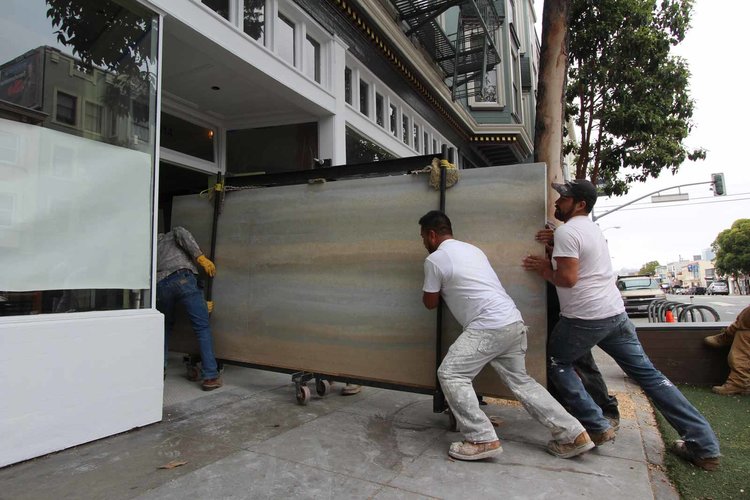
Photo Credit: Oliver Atwood
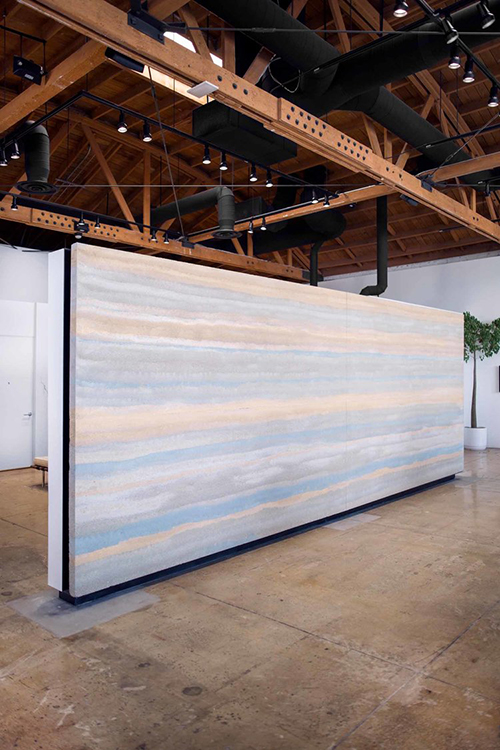
Photo Credit: Jessie Gillan
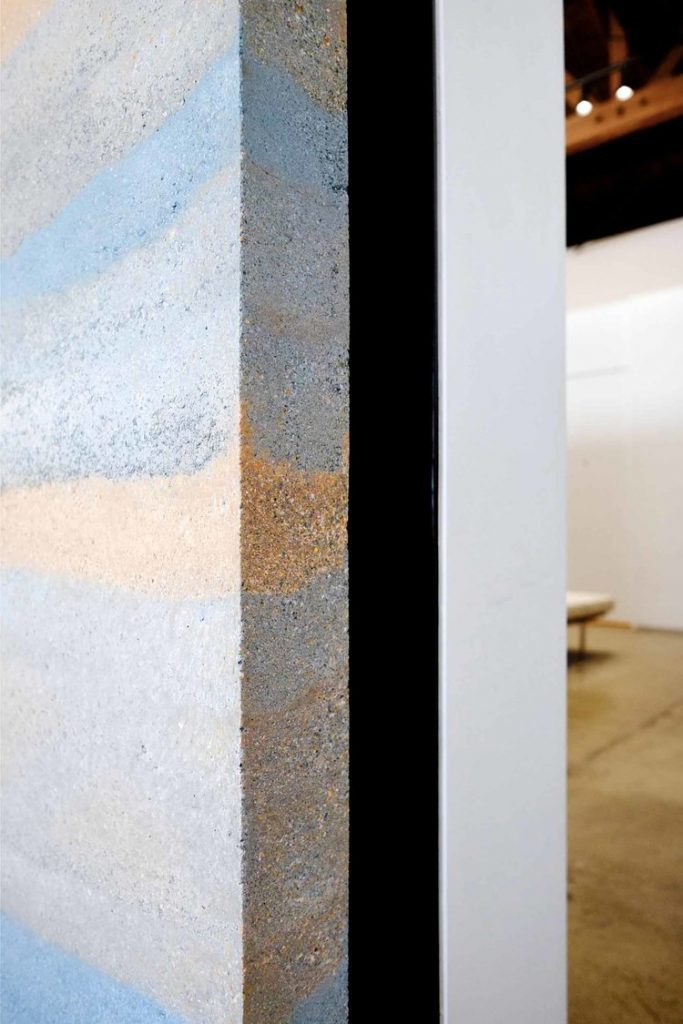
Photo Credit: Jessie Gillan
O: What are the biggest challenges faced in building rammed earth of consistent quality in the field?
D: The biggest challenge is consistent mix design. You know, if you’re pouring concrete, you have standards that have been established over millions and millions of cubic yards of material and they use clean, washed sand and gravel and manufactured Portland cement so the formula never changes.
When you’re building rammed earth, the formula is constantly changing based on the aggregates that you have and you’re using a fine particle constituent, the dust, the silts and clays, to allow you to develop strength and to replace some of the cement. But those fine particles will vary from region to region and parent rock to parent rock. So it’s really about an understanding of the variation in mix design which affects the quality of rammed earth.
O: At the outset of a project, starting with a soil sample, what kind of process do you go through to determine what amendments need to be made, how much cement you need? How do you test mix designs?
D: Well you start by taking your material that you’re hoping to develop a mix design for and you subject that material to standard geotechnical testing. Primarily you are looking at gradation – the relationship between the very fine particles – the clays and silts – and the sands and gravels, because there is a certain proportion between fine and coarse that creates the best possible packing index.
Then you test the fine particles that are in that aggregate to see if those fine particles are clay and hence sticky or silt and inert. Then you will also test for shrinkage and the specific density – is the rock itself hard and is it absorbative? But your two key tests are your gradation and your plasticity which is the percentage of the material that is clay. Those are your standard geotechnical tests.
O: So what comes after the geotech analysis?
D: Then you have what’s called your trial mixes. Your trial mixes are using prior knowledge of how this material with these characteristics is likely to perform once its mixed with cement and compacted. So relying on experience you can say ‘this material should have more coarse in it, so I’m going to add some sand or some gravel.’ And then I try to reduce my cement content to something realistic like 7 or 8 percent, and then I make the sample, I cure them, I test them for their absorption, their shrinkage, and their compressive strength.
If my first trial mix hasn’t produced the structural metrics, the strength, absorption, shrinkage that I need for this project, then I will adjust my mix design and try it again. Another trial mix. Until I’ve achieved the strength I am looking for with the lowest cost. If I have to add sand, sand is expensive. If I have to add cement, cement is really expensive. So the trial mix designs are all about producing the desired results at the lowest cost.
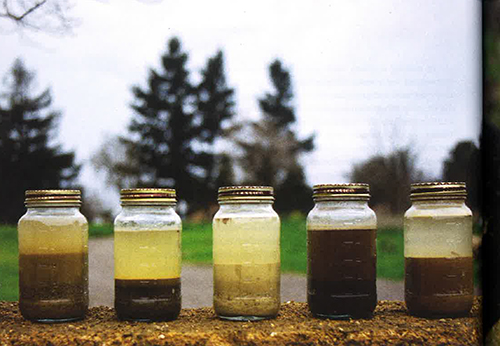
Photo Credit: Cynthia Wright
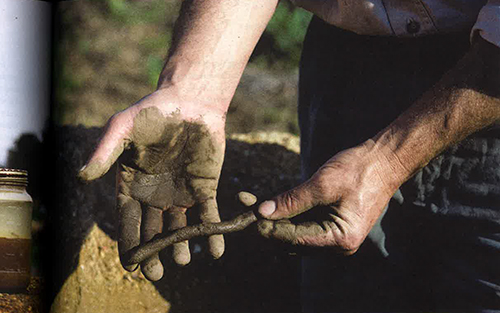
Photo Credit: Cynthia Wright
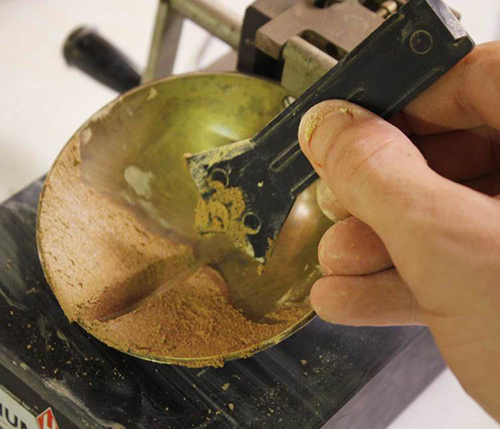
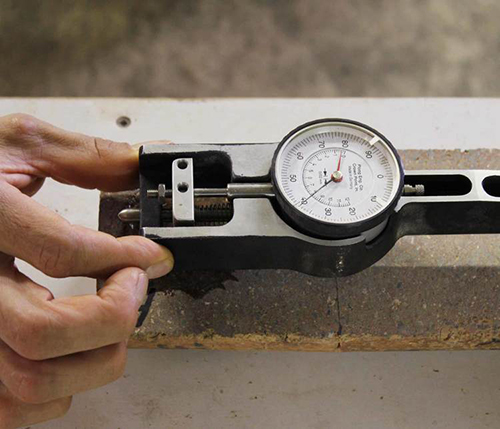
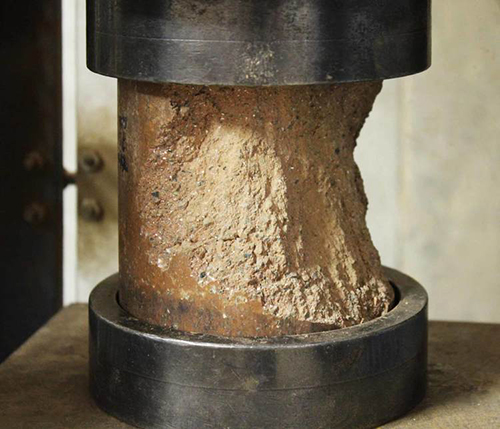
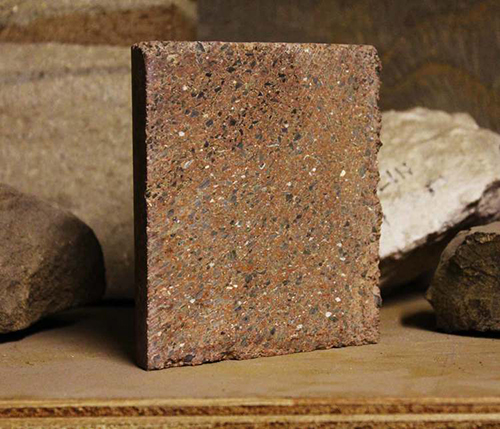
O: Watershed Materials has experimented with using geopolymers in some of their blocks. What are geopolymers and what makes them different from other types of binders?
D: That’s a really technical question. That’s one that Dr. Munoz has been working on with his vast scientific background and is hard for a layman like me to answer.
-At this point, Taj (David’s son and chief mix designer) walked over-
D: But I’m gonna let Taj answer this question
O: So Taj, what are geopolymers and what makes them different from other types of binders?
Taj: Well, geopolymers are broadly defined as a class of alkali-activated aluminosilicates, which create a cementitious binder not dissimilar to cement and having similar chemical properties to cement.
From a technical perspective they are very similar to Portland cement. They perform relatively similarly, but as I mentioned it really describes a family or a broad class of materials. Ordinary Portland cements are variable too and can have variable makeup and performance, but I would say geopolymers are even broader term. Especially when you consider the types of materials we’re experimenting with, which are on an extreme end of the spectrum in terms of the reactivity of the aluminosilicates.
Most of these geopolymers use highly reactive aluminosilicates like fly ash or slag, meaning that they’re very easy to get to react to create these sorts of bonds. The materials we’re using like clays are aluminosilicates with low reactivity meaning they’re less easy to get to activate in an alkaline environment. So it’s really a two part equation where you have some source of aluminosilicates which can vary widely and then they’re put in a highly alkaline environment and the curing is controlled and then these bonds are able to develop.
At a really low temperature or a really high temperature, the reactivity of cement is going to change a lot. The same is true of geopolymers, you just have a narrower range of operability. So you have to have tighter controls over curing and the chemistry and it’s a little trickier to get right.
There’s a reaction and essentially you’re breaking down components and re-assembling them into something new.
O: Fascinating. David, where do you see rammed earth technology 100 years from now?
D: I don’t know. What’s gonna happen 100 years from now? Are we going to build durable, resilient, beautiful, solid buildings or are we going to move into portable, lightweight, factory-built structures that can be picked up and moved inland as the oceans rise? You would think that a technology that was built upon capitalizing upon local resources would have merit.
O: If you hadn’t discovered rammed earth, what do you think you would have done instead?
D: Well, the tongue-in-cheek answer is that I would have designed rocket ships and electric cars.
T: He would have been an inventor.
D: I would have been an inventor, yeah. I’m a compulsive tinkerer. Thinking back to those early days there when I thought I was a builder following in my grandfather’s footsteps, I built those houses and at first it was about building and then I discovered rammed earth and I got excited about something that no one else had ever done before. That’s how we started this whole thing. Why did I do rammed earth? Because no one had done it before.
T: That’s right. It’s very hard to imagine him, if it weren’t for rammed earth, going into a career in straw bale or something else that was so well trodden that he just fell into the pack, so I think innovation is pretty central to this guy’s personality.
D: Yeah, it’s in my whole briggs meyer thing too. I’m a compulsive inventor.
T: He would have been innovating and inventing new systems even if he wasn’t in building.
D: And that’s what I studied in university too after trying to be an engineer and trying to be an architect and trying to be a philosopher and then they had this new department that they called product design and woah, man! I loved it.
T: I think the scope too. I believe him when he says it had to be buildings because he’s someone who thinks in large scale terms so working on innovating on something small is not as interesting or important seeming as revolutionizing world housing. And he’s not a politics guy, he’s a technical guy so you take that –
D: Where did you come up with ‘revolutionizing world housing?’
T: (laughing) Well, I’ve known you a long time…
D: Well that, as an idealistic 25 year old, that’s what I thought I was gonna do. I was either gonna be president of the United States or revolutionize world housing.
T: You wanted to do something important.
D: Yeah, I wanted to do something important.
O: Well David, thank you so much for sitting down with me. I’m really looking forward to reading your next book.
D: Maybe I’ll write it in Palm Springs this winter.
One Response to “David Easton – 45 Years of Rammed Earth”
Leave a Reply
You must be logged in to post a comment.






Susan Swift
11. May, 2020
Hi,
For my construction project we would very much like to use Watershed blocks for an exterior wall but we can not get in touch with your company. Please contact us if you still have blocks.
Susan Swift